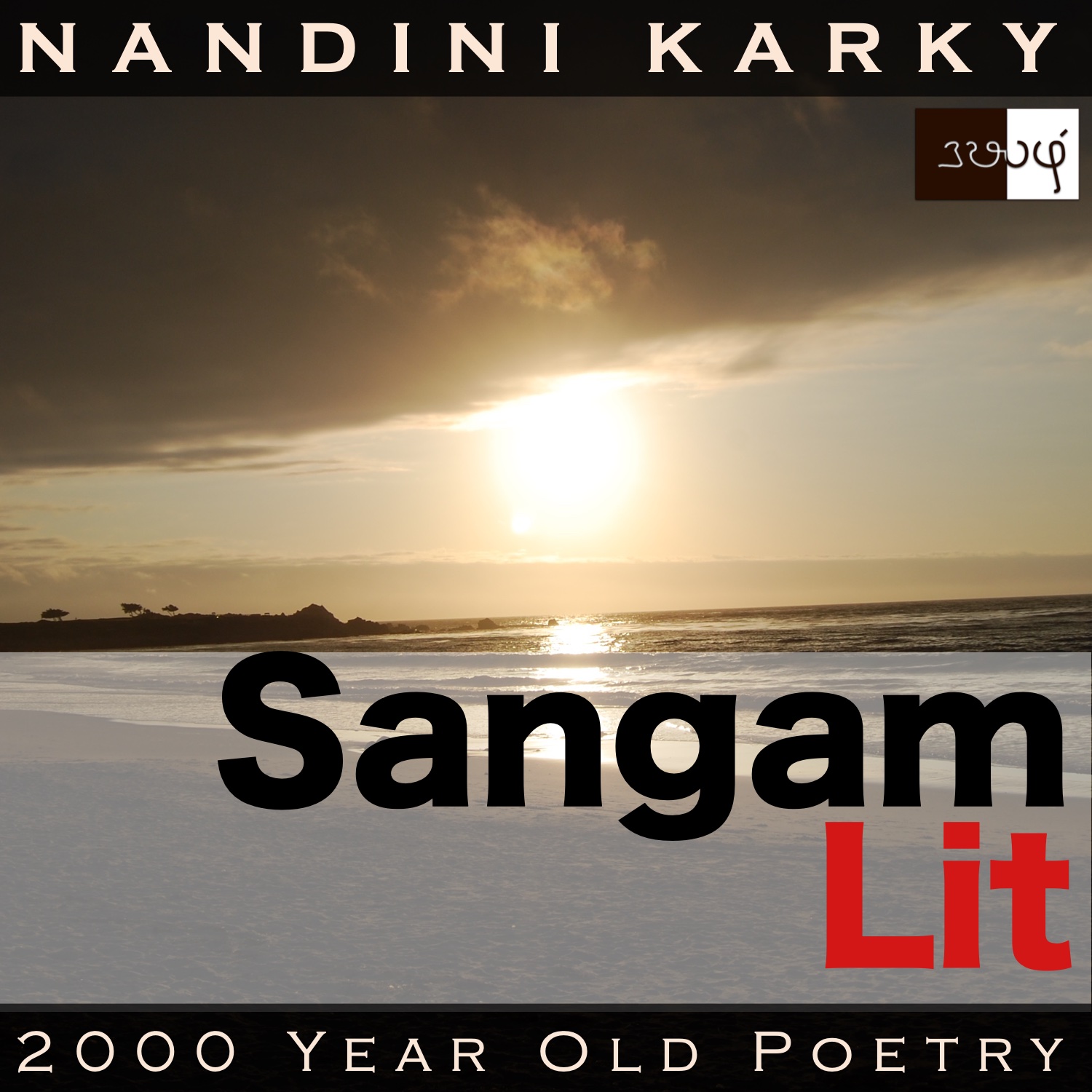Podcast: Play in new window | Download
Subscribe: Apple Podcasts | Spotify | Amazon Music | Android | iHeartRadio | TuneIn | RSS | More

In this episode, we listen to a lady’s lament about the imminent evening, as portrayed in Sangam Literary work, Kurunthogai 122, penned by Orambokiyaar. The verse is situated in the coastal regions of ‘Neythal’ and speaks in the voice of the lady, illustrating the effect of an evening on her mind.
பைங் கால் கொக்கின் புன் புறத்தன்ன
குண்டு நீர் ஆம்பலும் கூம்பின; இனியே
வந்தன்று, வாழியோ, மாலை!
ஒரு தான் அன்றே; கங்குலும் உடைத்தே!
‘It’s here, the thing of torment is here’, cries this verse! An element of nature greets us in the beginning in the words ‘பைங் கால் கொக்கு’ meaning ‘seabird with green legs’. That curious adjective we have encountered in many other poems makes an appearance in ‘குண்டு நீர்’ referring to ‘deep waters’. A quintessential flower belonging to these regions appears in ‘ஆம்பல்’ or ‘white waterlily’. The phrase ‘வாழியோ, மாலை’ meaning ‘may the evening live long’ renders a blessing unto a time of the day. Ending with the words ‘கங்குலும் உடைத்தே’ meaning ‘brings along the night’, the verse beckons us to listen intently.
Why does a picturesque waterlily bring such poignant thoughts to the lady’s mind? The context reveals that the man and lady were leading a happy married life when the man parted away on a mission, making the lady languish in his absence. One day, the lady says, “Appearing like the slender back of a green-legged seabird, the waterlily in the deep waters has closed its buds. Here comes the evening, may it live long. But, that is not all, it brings along the night too!” With these words, the lady announces the arrival of the evening and all that it seems to herald for her.
A tiny verse with a simple thought at its core! The lady’s eyes fall on a waterlily that was standing tall, rising from the deep waters beneath. To her mind, it appears like the curved and slender back of a stork with green legs. She notices this waterlily slowing pulling its petals together and closing its buds. Needing no watch on her forearm, the lady immediately announces to the world ‘here comes the evening’. Rendering a blessing to this evening, she adds that this is not the end of her troubles, for what follows, is a night of loneliness.
Delving deeper into the layers here, first we see the unique ability of Sangam people in connecting plant and animal species, seeing one in the other and symbolising the oneness of life. Then, the way the lady can exactly tell the time of the day by just looking at a flower would seem like magic to people like us, cloistered indoors and living lives before screens. Even now, in rural areas, farmers who work the fields can tell the time of the day without consulting any external tool but for those of us, living in cities, doesn’t our necks instinctively turn to a clock or a phone when we think of time? Haven’t we lost the awe for this expansive thing called time by limiting it to lines on a device? Returning to the verse, the next thing that strikes us is the way the lady renders a blessing to the evening. It’s not a happy time for someone like her, who is separated from her lover, and yet, even to the thing she sees as a torment, she renders a blessing, echoing her high culture. By expressing these words, hopefully the lady has braced for impact and will find the strength to tide over yet another night of separation from her beloved.




Share your thoughts...